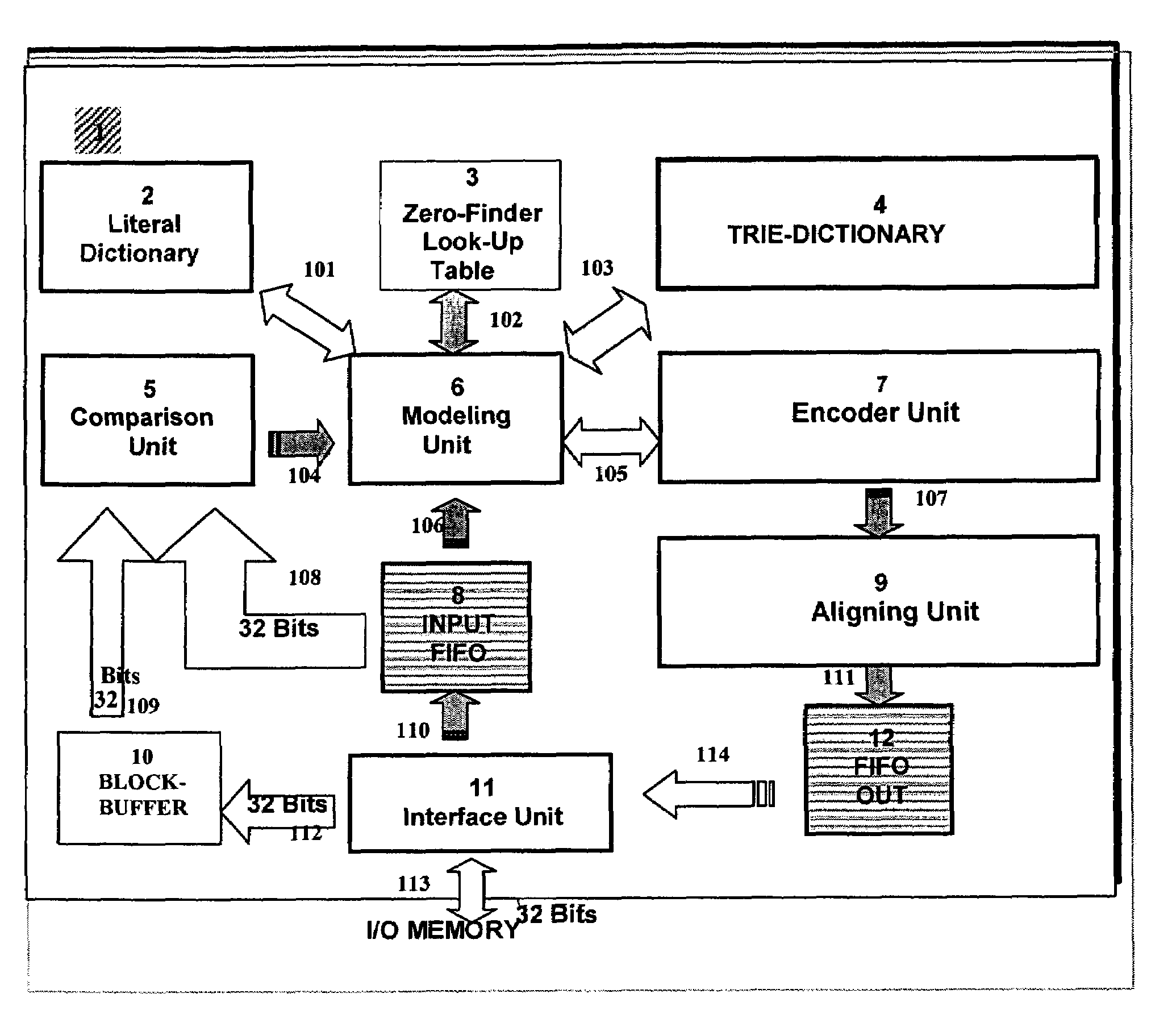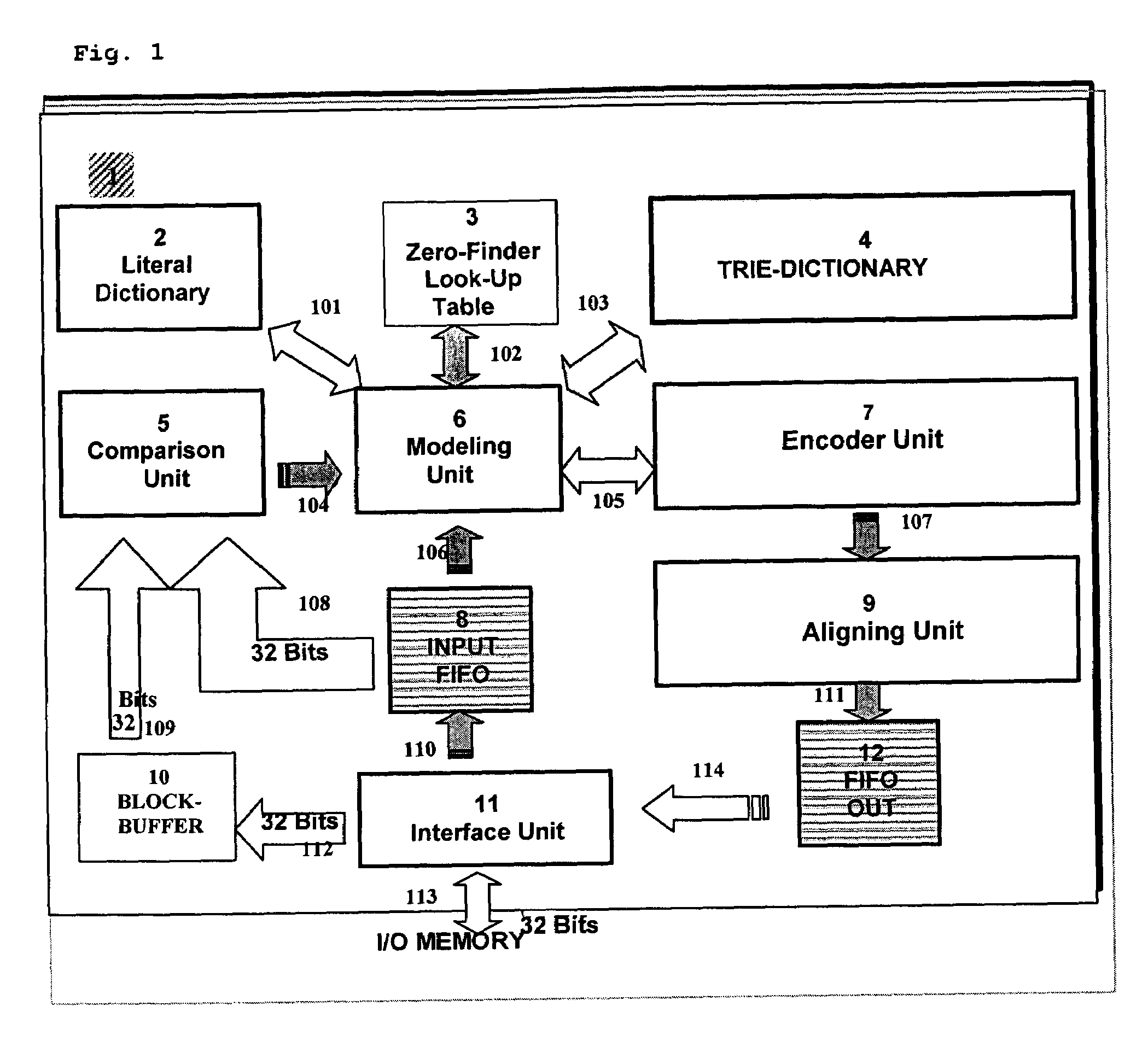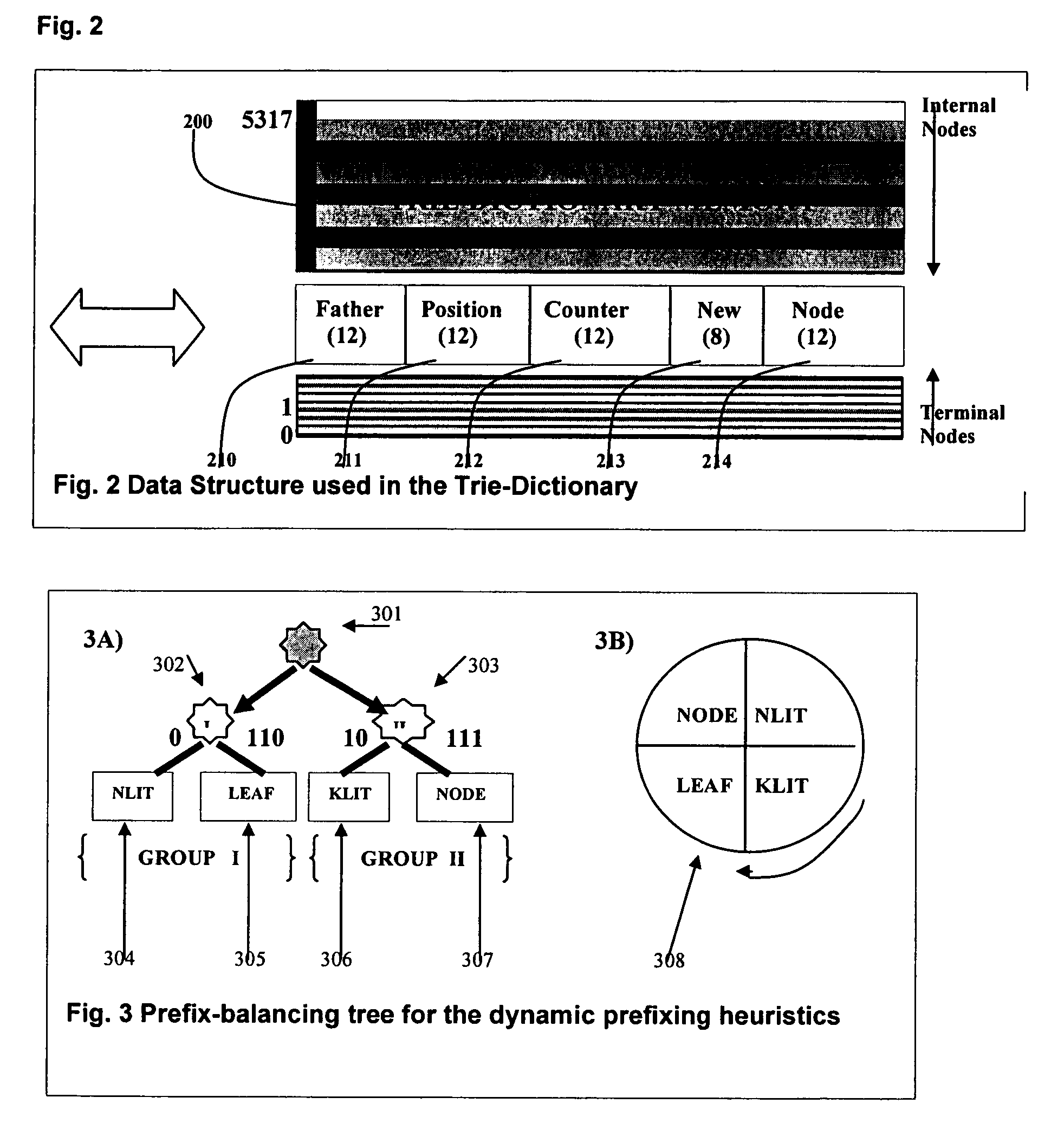Block data compression system, comprising a compression device and a decompression device and method for rapid block data compression with multi-byte search
a data compression and block technology, applied in the direction of code conversion, electrical equipment, etc., can solve the problems of inability to transmit additional information referring to statistics, the optimality of entropy, and the precision of arithmetic required, and achieve the effect of fast block data compression and high performan
- Summary
- Abstract
- Description
- Claims
- Application Information
AI Technical Summary
Benefits of technology
Problems solved by technology
Method used
Image
Examples
Embodiment Construction
[0058]The objects of this invention are a block data compression apparatus and method performing a block data compression with Multi-Byte search. The invention is presented in FIG. 1, showing the block diagram of the preferred embodiment of the apparatus, as a non-restrictive example of implementation of a device that accomplish the data compression and decompression, according to the procedure described, also object of the invention.
[0059]The system described in FIG. 1 shows a block diagram of the preferred embodiment of this invention, that could be hardware or software implemented, without restrictions whatsoever, by means of discrete integrated circuits, a FPGA or any associated digital design technology, which could be the basis for development of ASIC devices.
[0060]There is a Compression Unit 1, composed by a Trie-Dictionary 4, comprising a high-order dictionary and there is also a Literal-Dictionary 2 comprising the low-order dictionary. In principle, the compression unit can...
PUM
 Login to View More
Login to View More Abstract
Description
Claims
Application Information
 Login to View More
Login to View More - R&D
- Intellectual Property
- Life Sciences
- Materials
- Tech Scout
- Unparalleled Data Quality
- Higher Quality Content
- 60% Fewer Hallucinations
Browse by: Latest US Patents, China's latest patents, Technical Efficacy Thesaurus, Application Domain, Technology Topic, Popular Technical Reports.
© 2025 PatSnap. All rights reserved.Legal|Privacy policy|Modern Slavery Act Transparency Statement|Sitemap|About US| Contact US: help@patsnap.com



